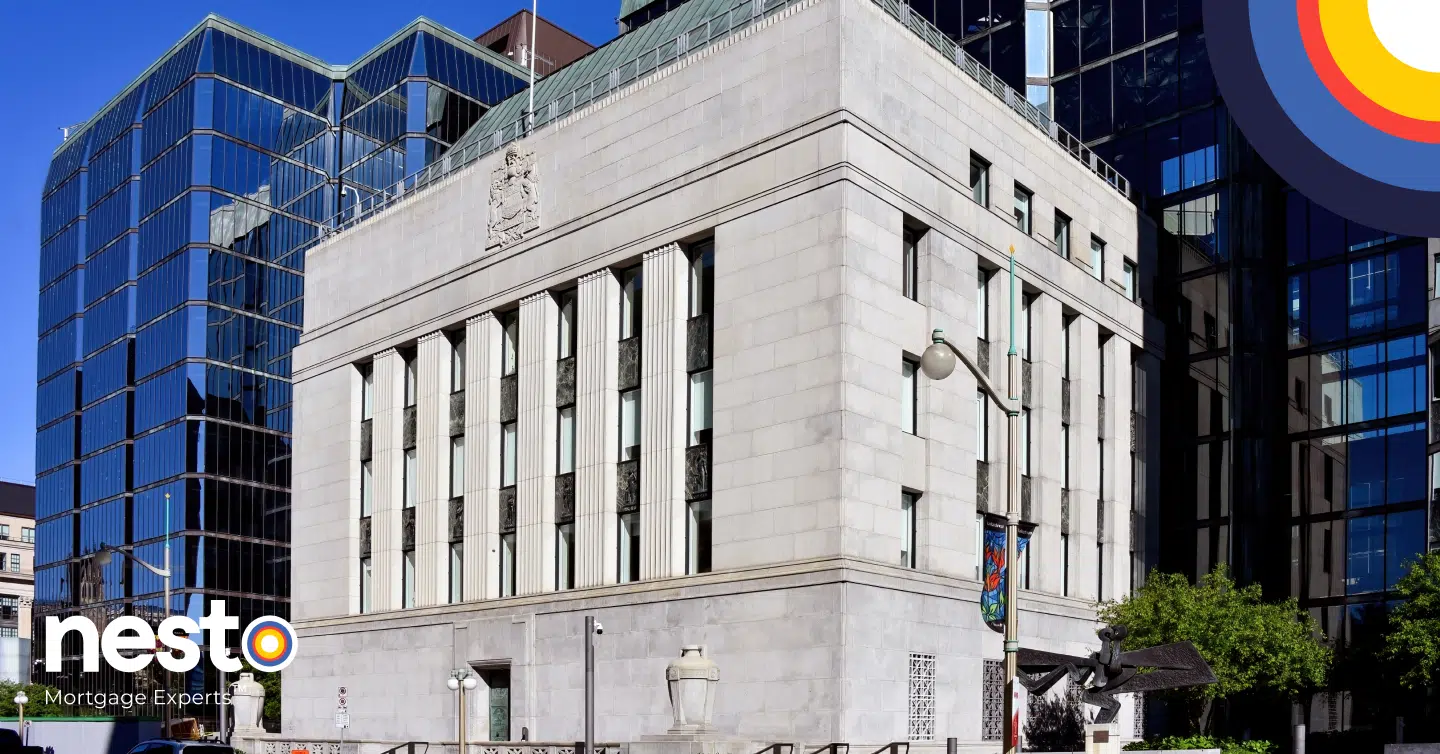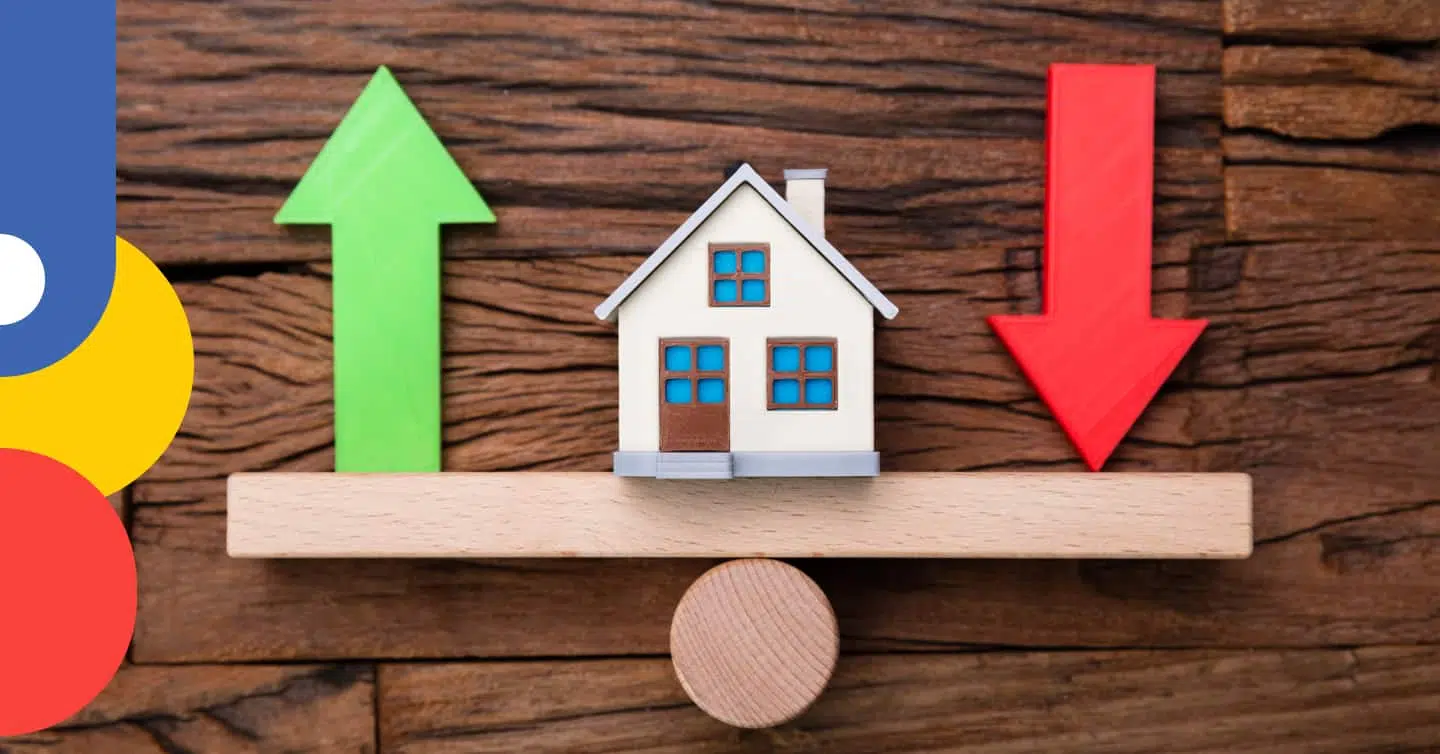Mortgage Basics #Home Buying #Real Estate
Mortgage Basics #Home Buying #Real Estate
Types of Houses in Canada | Most Common Home Types

Table of contents
The word home has a distinct meaning for everyone. Canada is home to a diverse range of property types that have catered to the unique needs of individuals and families for decades. From detached houses to downtown condos, the most popular types of housing are from Ontario to British Columbia and everywhere in between.
Key Takeaways
- Canada is home to several popular home types, including detached, semi-detached, condos, and townhomes.
- Homeowners choose their homes based on a combination of factors, such as location, space, ability to renovate, and aesthetics.
- The benchmark home price in Canada was $670,064 in January 2025, a 1.1% increase from January 2024.
Types of Homes in Canada
Detached
Detached means the house stands alone, sharing no walls with other properties. Due to their space, privacy, and size, detached homes are usually more expensive than other housing types in Canada. As an owner, you’re not only responsible for the maintenance of the property and any surrounding land you own, but you’ll also likely pay more in property taxes since they are based on property values.
The sense of ownership you get from owning the entire building you live in is, for many, the ultimate goal when buying a house. Additionally, detached houses often have a front and/or back yard, making them ideal for families.
Semi-detached
Semi-detached houses share one common wall with another property. Typically, they are located at the end of a row of terraced houses or townhomes or as a single building split down the middle by one wall.
Semi-detached units, also known as ‘semis,’ generally have a private yard with a shared fence. They are a fairly popular housing type in Canada because they offer relatively good privacy and space, with fewer direct neighbours than condos or plexes.
Townhouses
Townhouses, or townhomes, are rows of houses sharing walls on either side with neighbours. However, there are some differences in how people describe townhomes. Townhouses at the end of a row, for instance, could be considered semi-detached homes, too, since they only share one common wall with another household.
Townhomes sometimes have outdoor yard spaces or patios and even sub-ground-level garages. They are popular because of their affordability, style, location (often closer to downtown), and flexibility.
Condos
Condos, short for condominiums, are apartment units usually found in multi-unit buildings or high-rises. Condos are unique because a condo corporation owns and maintains the building’s common areas and exterior, but residents will own what is inside their suite. As a condo owner, you can change your space’s layout if it doesn’t interfere with the building’s structural integrity. Yes, this includes knocking down or putting up walls.
While condos are among Canada’s more affordable property types, there are some things to be aware of when buying one. Unless you’re on your building’s condo board, you will have very little control over the other tenants in the building as a resident or the upkeep of the building. You’ll also have to pay condo fees, ranging anywhere from $0.30/sq.ft – $0.75/sq.ft or more monthly in Canada. These are used for repairing and maintaining a condo and pooled with other residents’ fees.
If you want to buy a condo, research and find a reputable property group or seller in a good-quality building. Consider joining your condo board and influencing the upkeep of your building.
Condo Townhomes
Condo townhomes differ from regular townhomes since they’re owned by a condo corporation, which manages and owns any exterior elements of the buildings. Residents pay monthly fees for building maintenance, yards, and shared amenities, as with a typical condo. Condo townhomes can also have multiple units stacked on top of each other, as opposed to tenants owning every floor within the portion of a building.
Bungalows
Bungalows are detached homes generally consisting of one floor and potentially a basement. They are single-floor buildings on the ground level only. While increasingly less common than other types of new-build homes in Canada, bungalows are still prevalent across the country, especially in more rural areas.
While many homeowners prefer split-level or multi-storey houses, bungalows offer the advantage of providing an affordable detached home with the potential for more outdoor space than townhomes or other property styles. Acreages, for example, often include a bungalow as the primary residence building.
Split-level
Split-level homes are a unique property type in Canada. While they are rarely built as new homes nowadays, they can still be found across the country and have recently grown in popularity. Split levels come in many shapes and sizes and have different layouts.
Generally, split levels include a main floor spread across different levels, e.g., interior steps. Split levels are designed to maximize vertical space. They can include standard features like low-pitched roofs, integrated garages, large living areas and family rooms, and a healthy amount of yard and patio space.
Duplex, Triplex, Fourplex
A duplex is a building or house containing two apartments: a triplex three and a fourplex four. There’s some debate about whether a duplex and semi-detached home are the same in Canada. While some describe semi-detached houses as side-by-side duplexes, others see duplexes strictly as a building containing two suites stacked one on top of another.
A plex property is a building containing two, three, or four homes, each with a separate entrance. The homes may have multiple floors. One or many owners can own these buildings and choose to occupy or rent out their homes. Plex properties are becoming rarer as new builds in the country.
Benchmark Home Prices in Canada
The benchmark price of a Canadian home in January 2025 was $670,064, an increase of 1.1% year over year. However, although the benchmark home price has increased, it has dropped month over month as high interest rates continue to affect the market.
| Benchmark Home Prices in Canada’s 10 Largest Cities | ||
| City | Population* | Benchmark Home Price January 2025 |
| Toronto | 2,794,356 | $1,070,100 |
| Montréal | 1,762,949 | $549,900 |
| Calgary | 1,306,784 | $573,100 |
| Ottawa | 1,017,449 | $649,900 |
| Edmonton | 1,010,899 | $412,200 |
| Winnipeg | 749,607 | $363,200 |
| Mississauga | 717,961 | $1,046,600 |
| Vancouver | 662,248 | $1,173,000 |
| Brampton | 656,480 | $983,700 |
| Hamilton | 569,353 | $819,500 |
The average price of a home in Canada varies depending on the city you choose. For example, Toronto, Vancouver, and Mississauga have housing markets that are some of the most expensive places to buy real estate across all residential categories. Alberta has two standout markets: Calgary and Edmonton, some of Canada’s most affordable major cities for purchasing any property type.
Home buying without the stress.
Start your mortgage application today
Getting a Mortgage to Finance Your Home
For most Canadians, getting a mortgage is the best way to finance buying a home. With a mortgage, you generally save up enough for a downpayment and receive a loan for the remaining value of the home. A mortgage loan accrues interest every year and typically has a term of 5 years and a much longer amortization period. By the end of this period, both a mortgage’s principal and interest should have been paid off.
In Canada, there are several different types of lenders and mortgage solutions. At nesto, we not only help you compare the best rates available instantly, but we also lend directly. Getting a mortgage in Canada involves finding the right lender for your situation. Different lenders will have their lending criteria; some may be more specific or strict than others. For A-lenders, you must provide proof of income and employment, evidence of your existing debt-to-income ratio, and solid credit. Several documents are also needed to apply for a mortgage. In some cases, getting pre-approved for a mortgage is also possible before you’ve settled on a specific property.
Frequently Asked Questions
Which home type is most popular?
Detached houses are the most popular kind of home in Canada due to their space, privacy and the control an owner has over structural and aesthetic decisions. Unlike condos and duplexes, detached houses are probably the only homes where an owner has a more or less complete say over the changes they want to make to their property (assuming they have the required permits).
How many types of homes are there?
Since people describe them differently, it’s difficult to pinpoint the number of home types. Canadians are generally familiar with 6 or 7 traditional house types: detached, semi-detached, condos, townhouses, duplexes, split-levels, and bungalows. However, there are other types of homes. For example, tiny homes are becoming increasingly popular as the cost of living increases, while outdoor space and location become more significant priorities for homeowners.
Can you get a mortgage for every home type?
Getting a mortgage for most conventional property types is possible as long as you meet the approval criteria. There are specialty lenders for boat and marine loans, which could technically be used as homes but do not qualify for conventional mortgages. Similarly, you must apply for a construction loan if you plan on building a brand-new home.
Final Thoughts
Canadians have many home types to pick from, each with its pros and cons. Ultimately, the kind of home you want to buy depends on your situation and preferences. If you’re looking to get a mortgage for any of the most common types of homes in Canada, nesto can help you compare the best rates or lend directly.
Whether you’re looking for a condo in the city or a house in the suburbs, we can help. Get in touch with a trained mortgage professional today to discuss your goals and take the next step to buying the right home for you.
Ready to get started?
In just a few clicks, you can see our current rates. Then apply for your mortgage online in minutes!














